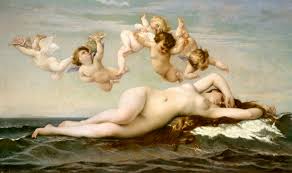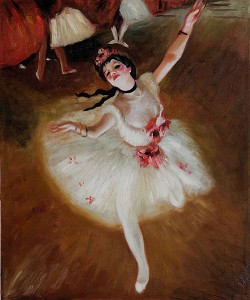I recently went to the Tate Modern to view and experience the works that they had there. It was very interesting to see the works that I had seen in books, in class and on the internet in real life. The Tate Modern has a wide range of art movements to look at, from Abstract Expressionism and Surrealism, to Pop Art.
POP ART
One of the main art movements in the Tate was Pop Art. Roy Litchenstien was one of the major artists of this movement, recreating scenes from popular comic strips from magazines and comics. Pop Art was popular because of the attractive loud colours and bold, simple style. However, at the Tate they had work of another major pop artist, Andy Warhol.
Andy Warhol did a lot of screen prints, and focused on image, celebrity and commercialism. He did many prints of Marlyin Monroe, as he was interested in how famous people lost their individual identity once they became a “celebrity”. He used screen printing, because he felt that that was the most impersonal method of making art, and he used it because he wanted to use his detachment from the work to make a statement about society.
SURREALISUM
Another art movement at the Tate was Surrealism. Surrealism was a art movement based on dreams and the subconscious.
Max Ernst was a big artist of this movement. A lot of his work is very textured and detailed, and seeing it in real life allowed me to look at things that I would not be able to see on the computer screen or in a book. For example, in “The Entire City”, he has used the texture of paint pallets, mixed with light colours to make the painting interesting and to convey a feeling. There is a feeling of sanctuary, safety and peace to the work, compared with “Forest and Dove”, which feels like a nightmare because of the dark colours.
 <–The Entire City
<–The Entire City  <—Forest and Dove
<—Forest and Dove
ABSTRACT EXPRESSIONISM
Abstract Expressionism was a movement that focused on expressing a feeling, without depeciting any image in particular. Abstract Expressionist artists instead used colour and scale to achieve this.
The most famous Abstract Expressionist artists were probably Jackson Pollock and Mark Rothko. Mark Rothko depicted shapes (usually rectangles) painted by layering similar colours over the top of each other. It was interesting to see these images in person, as the feeling of the painting changes. What comes across as one colour on a screen, can actually be many subtly different ones, and you can see how the colours are blended together. Also you can see the scale of the painting. Mark Rothko paintings are large in scale, meaning that you can feel a bit lost in them, which you cannot do otherwise.













































































 The left is my first attempt, the right is my second.
The left is my first attempt, the right is my second.




























